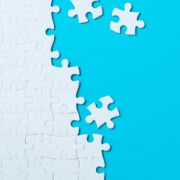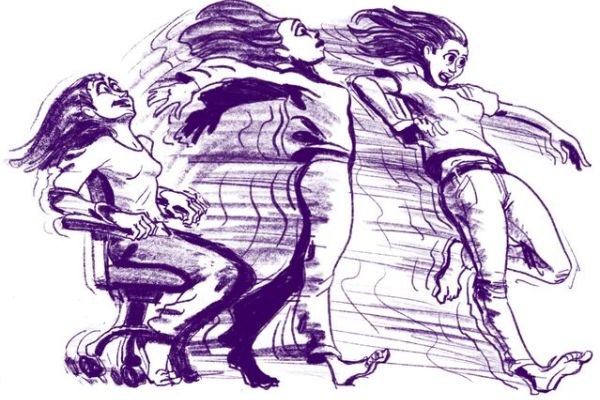
Migraine
Migraine is a neurological condition that involves intense headaches and symptoms such as nausea, tingling, numbness, sensitivity to light and sound, and a temporary lack of vision. The pain of a migraine can be debilitating.
The length of a migraine can range from a few hours to three days. Some people only experience a handful of migraines in their life; for others, weekly attacks render migraine a chronic illness. They most often emerge in adolescence and early adulthood.
In the last year, between 50 and 75 percent of adults have had headaches, and 30 percent of those individuals had migraines, according to the World Health Organization. Migraine affects about twice as many women as men.
Migraines cannot be completely cured, but prevention and treatment strategies can help those with migraine reduce their pain and improve their daily life.
In addition to the burden of physical pain, migraine can take an emotional toll. People often struggle to receive a diagnosis or find effective treatment. They cycle through good days and bad days, and an attack can derail their routine. Others may not believe their pain, which can lead to hurt feelings and strained relationships. It’s natural to experience sadness, anger, stress, and more. But coping skills can help people manage emotional hurdles and lead a fulfilling life.

It can be difficult to understand the experience of a migraine without having had one. In addition to intense physical pain, people can have sensory symptoms like extreme sensitivity to light, cognitive symptoms like language deficits, and emotional symptoms like irritability and depression. Attacks can be overwhelming and debilitating.
The symptoms of a migraine depend on the stage of the attack. There are four distinct phases, which may manifest differently for different people.
1. Prodrome: This stage begins a day or two before a migraine and offers warning signs that an attack is coming. Symptoms include sensitivity to light and sound, nausea, muscle stiffness, sleepiness, food cravings, feeling thirsty, irritability, distractibility, and sadness.
2. Aura: An aura is a brief phase before the headache that involves altered vision, including blind spots, blurry vision, vision loss, and seeing lights or patterns. Auras can also include tingling, numbness, and difficulty speaking, writing, or thinking. Twenty to 30 percent of people with migraine experience auras.
3. Headache: This stage involves throbbing head pain, which can range from mild to severe, on one or both sides of the head. Other symptoms include nausea, vomiting, and extreme sensitivity to lights, sounds, and smells. Headaches can last from four hours to three days.
4. Postdrome: Many people, but not all, struggle in the aftermath of an attack, experiencing fatigue, achiness, and difficulty thinking and concentrating for the next day or two.
Migraines are diagnosed by a neurologist. The doctor will ask about your history experiencing headaches, your family history, and symptoms about the pain, for example what the pain feels like, where your head hurts, and what preceded the attack. A full physical exam will be conducted to explore underlying reasons for the pain. An MRI or CT scan may be used to rule out factors such as a tumor or brain damage. After a diagnosis, the doctor and patient will begin to develop a treatment plan.
Some people say they have a “migraine” to refer to a bad headache. But a migraine is a different experience. People can experience different symptoms, but they typically involve head pain that people describe as splitting or pulsing, as well as extreme sensitivity to lights, sounds, and smells. Some vomit from the pain or lose their vision. One child described a migraine by saying her “head was on fire.” Another cringed at light and wasn’t able to look at his phone screen.
Many people experience a “hangover” period after a migraine, which can last for hours or days. They may still feel some head and neck pain, in addition to exhaustion, irritability, sadness, sensory sensitivity, and mental fogginess.
After a migraine, fears may also set in about future attacks. This can elicit anxiety about health, relationships, and professional abilities. Someone might wonder, “How much can I accomplish not knowing how long I’ll have?” “What if my friend thinks she can’t count on me and gives up on our relationship?"
After a migraine, it can help to rest, drink water, and take vitamins such as magnesium and riboflavin. Pain medication can help, but people should check with their doctor because too much pain medication can exacerbate headaches and migraines. If someone is struggling with fears of a future attack, mindfulness and gratitude practices can help put those worries aside and live in the moment.

There is no complete answer to the mystery of migraines. They involve abnormal brain function, including altered blood flow and imbalances of neurotransmitters such as serotonin and glutamate. Genetics play a role as well, as migraine tends to run in families. But there is still much to learn about the root cause of the condition.
What is clear is that certain variables trigger migraines. Triggers are different for each person, and it can be helpful to identify them to prevent or mitigate future attacks. Triggers include:
The brain itself doesn’t have pain receptors, so headaches occur when pain receptors in layers between the brain and skull are activated. Headaches are triggered by fatigue, stress, head injury, or medications which lead to dilation of blood vessels, blood vessel spasms, or inflammation of the meninges in those layers.
The pain of migraines, however, might originate in the brain. Some researchers believe that auras are caused by sudden increased, then decreased, neural activity in the cortex. The activation of these nerves releases proteins that cause inflammation to membranes that protect the brain, called meninges, and dilate blood vessels. Migraine medications called triptans work by constricting blood vessels and blocking serotonin.
Stability is key to preventing migraines. Seemingly simple changes, such as shifting from a weekday to a weekend, can increase the likelihood of a migraine. This could be due to changing sleep patterns, taking medications later in the day, and the body processing the stress of the previous week.
Seasonal changes can provoke migraine attacks, and the shift from summer to fall can be particularly dramatic. One reason may be that changes to atmospheric pressure lead to blood vessel constriction or insufficient oxygen. Other reasons include allergies, shorter days and longer nights, disruptions in sleep patterns, and seasonal affective disorder.
Yes, studies have documented a correlation between adverse childhood experiences (ACEs), such as neglect and abuse, and migraine, even more so than with regular tension headaches. The odds of migraine also increase when someone has experienced more than one form of ACE. Other studies have found a correlation between PTSD and migraine, that exposure to domestic violence in childhood increases the risk of migraine, and that people with migraine also have higher rates of childhood emotional abuse.
Migraines seem to be on the rise during the COVID pandemic. This trend may be due to environmental changes of all kinds, which increase the risk of migraine. People may be dealing with sleep changes, stress, anxiety, depression, and remote work; for example, people may be spending time in different physical positions at home than they would in the office.

Unfortunately, no treatments today can fully cure migraines. But medications can help prevent attacks and manage symptoms in the moment. Preventative medications include beta-blockers, antidepressants, and anti-seizure drugs. Pain relief medications include over-the-counter options such as Advil or Excedrin and prescription painkillers such as triptans. Taking medication early on is key to eliminating symptoms or reducing their severity.
Therapy can address anxiety or negative emotions fueled by migraines. Lifestyle factors play an important role as well; maintaining stable routines around sleep, eating, exercise, and work can help prevent attacks. Adopting these approaches can help people with migraine relieve distress and improve their quality of life.
If you sense that a migraine is coming on, try to find a quiet, dark room where you can rest. Take medication as early as possible in the course of the migraine. Putting a cold washcloth on the back of your neck may help by numbing the area; applying a heating pad may relax head and neck muscles.
From a longer-term perspective, aim to maintain regular sleep, eating, and exercise habits. Keep a log of what triggers your migraines so that you can identify and avoid those triggers, and develop a treatment plan with your doctor.
Some people with migraines use integrative medicine approaches to supplement medication. Acupuncture, mindfulness meditation, and biofeedback (a self-regulation technique in which people practice controlling some of their physiological processes) may help to reduce pain intensity and migraine frequency, research suggests.
Family, friends, and coworkers may not recognize the physical pain, emotional challenges, preventative measures, and medication side effects that people with migraines experience, especially because they sometimes mask their symptoms in order to accomplish necessary tasks. Having to explain the invisible struggles of migraine to others can be exhausting and worrisome; some may feel defensive, guilty, or avoid speaking about it altogether.
Living with migraines can lead to a heightened sense of uncertainty—what some call “illness uncertainty”—because they don’t know when a migraine will strike and how they might navigate it. This takes a mental toll and can lead to distress, anxiety, or depression, and even worsen perceptions of pain and stress. Exercising control when possible, such as having a prevention and treatment plan in place, can provide greater certainty and peace of mind.
Although living with chronic migraines will never be easy, certain tips can help you manage. One is that your body is not the enemy; it’s working hard to support you, and deserves compassion rather than anger. Another is to gradually accept that life is uncertain and unpredictable. Other tips include not wasting energy worrying about how others view your migraine, learning to forgive yourself, teaching yourself to ask for support, and helping others when you can.
People with migraine may be tempted to push through their pain, but that tendency often backfires and exacerbates the attack. It’s important to set limits for yourself when you’re dealing with pain and illness. For example, do not say yes to an activity if your body is telling you to. Don’t strive for perfection—sometimes it’s ok to do the bare minimum. And don’t speak to yourself harshly or in ways you wouldn’t speak to others. Practicing self-compassion is key.
Simply being with the person, and asking if there is anything you can do to help, is most important. Acknowledge their pain, and be patient with them. Be understanding if the person needs to cancel a plan or event, and recognize that the person has migraines but that the condition doesn’t represent her entire identity.
Perhaps even more important than what to do is what not to do. Since the condition is invisible to others, people often make comments that minimize the migraineur’s suffering. Avoid making comments such as, “You don’t look sick,” or “Do you need a Tylenol or something?” Chances are that the person has already tried the tips you think of, and many more.














